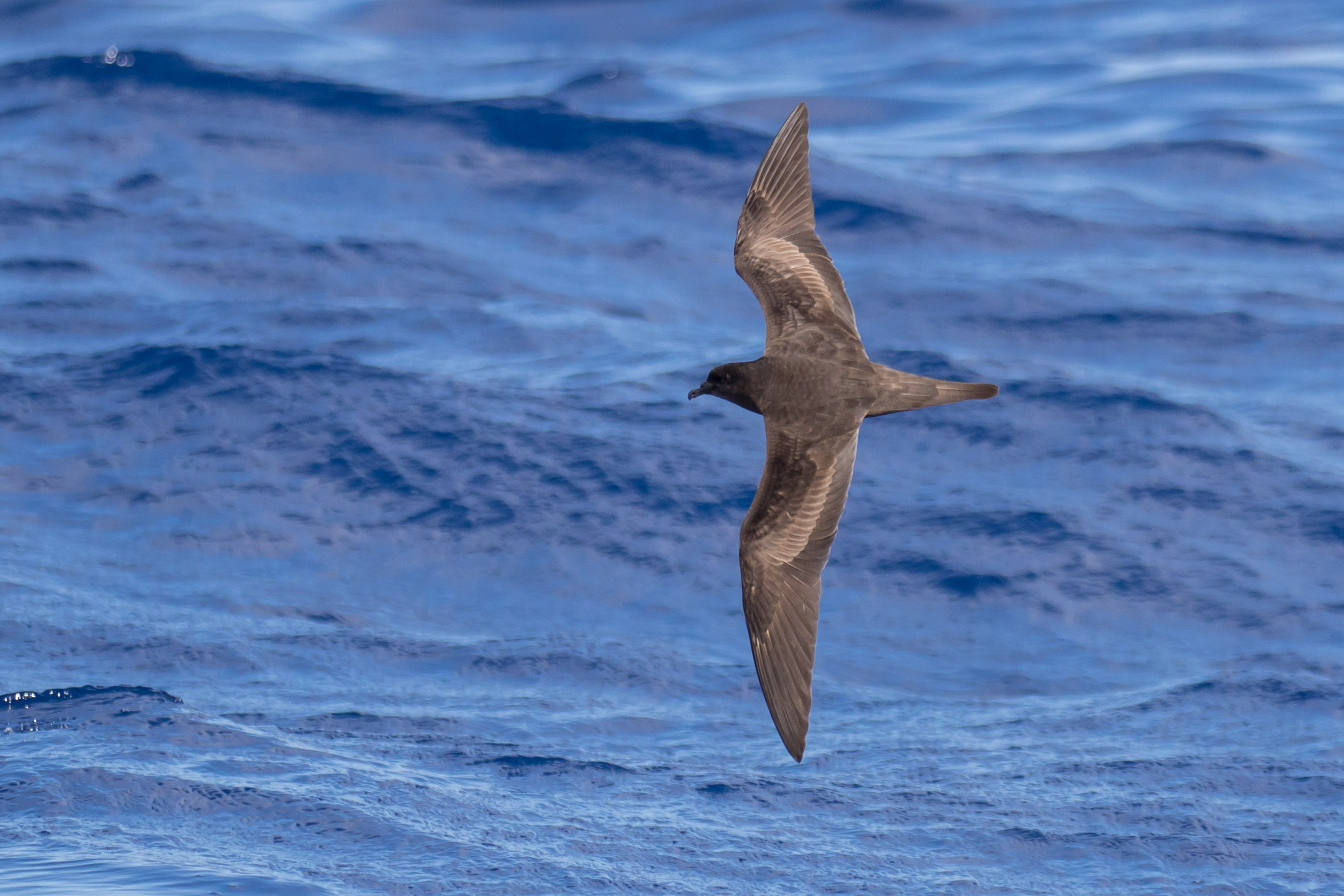The main target species of the Windbird pelagic trips are Pterodroma petrels and Storm-petrels. But one of the many nice things about the trips is that the supporting cast of common seabird species is still interesting, from a European birding perspective. Bulwer’s Petrel is a very rare bird in north-west Europe but is common in the seas around Madeira.
Madeira, and the associated Desertas and Selvagens Islands, host between 6,000 and 10,000 pairs of Bulwer’s Petrel (Fisher & Flood, 2011). They breed during the northern summer, so at the time of our visit in late July and early August the majority of breeding pairs may well have been feeding chicks. At sea they were an abundant species. On the second of our pelagic trips Bulwer’s Petrel significantly outnumbered Cory’s Shearwaters.
Whilst silent at sea, on their breeding grounds Bulwer’s Petrel have a strange barking call, issued from the nesting burrow and from birds in flight:
[© James Bradley, XC407940. Accessible at www.xeno-canto.org/407940]
My first sighting of Bulwer’s Petrel was from Ponta da Cruz on a landbased seawatch, when one buoyantly glided and twisted past in calm conditions over a flat sea. At mid-distance the bird appeared completely black, the long slim wings and body being obvious. These are unique Nightjar-sized petrels. There is something of the Storm-petrel in some of their flight actions when they are sharply zipping about in high winds, although they are twice the size of most Storm-petrels. But when in travelling flight, powering down a trough parallel to the wave, there is almost something of the tringa waders in their flight action: the head is held above the body, the wings are elevated, quick flicks of the primaries power the bird forward. They have a distinctive flight action all of their own.
At sea, and with better light, more plumage details became apparent. The pale carpal bar was visible at mid-distance in good light:

The paler secondary coverts of the upperwing create the pale carpel bar. The closed tail is long and attenuated. The upperwing primary bases are dark, with no pale patches as is seen in the much smaller Swinhoe’s Storm-petrel:

The pale upperwing carpal bar is pretty much the only stand out plumage feature. The body, head, tail and underwing are to all intents completely dark, unless the views are exceptional and in perfect light.
The wedge-shaped tail, so often mentioned in field guides, was not so obvious in our experience. We only saw the wedge as birds braked hard to hover, before dropping onto prey items:


But all dark birds are not easy to photograph. The light levels become even more critical. And that’s before you add the fact that you are in a small boat in potentially heavy seas, trying to photograph a small bird zipping past at speed. Eventually, I figured out that to get the best pictures of this species I would need to wait until early evening, when the light was soft, on a day when the sea was relatively calm. I had to be low down in the boat, at eye level when the birds skimmed past. On our third afternoon at sea, such conditions presented themselves and finally, the results were satisfactory! At close range and in perfect light Bulwer’s Petrel has a dark, hooded appearance. The feathers of the head and neck are the blackest of all on this all dark bird:




Having enjoyed the common supporting cast, it was then time for the main act. Next: Pterodroma petrels
